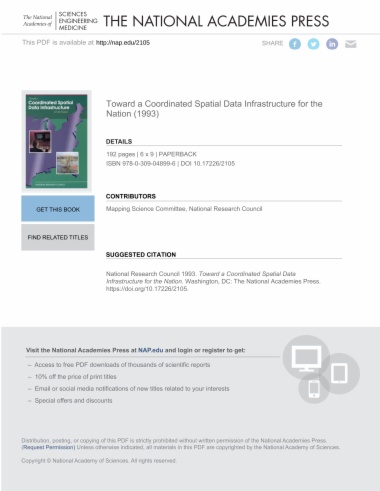

The National Spatial Data Infrastructure (NSDI) is the means to assemble geographic information that describes the arrangement and attributes of features and phenomena on the Earth. This book advocates the need to make the NSDI more robust. The infrastructure includes the materials, technology, and people necessary to acquire, process, store, and distribute such information to meet a wide variety of needs. The NSDI is more than hardware, software, and data; it is the public foundation on which a marketplace for spatial products will evolve.